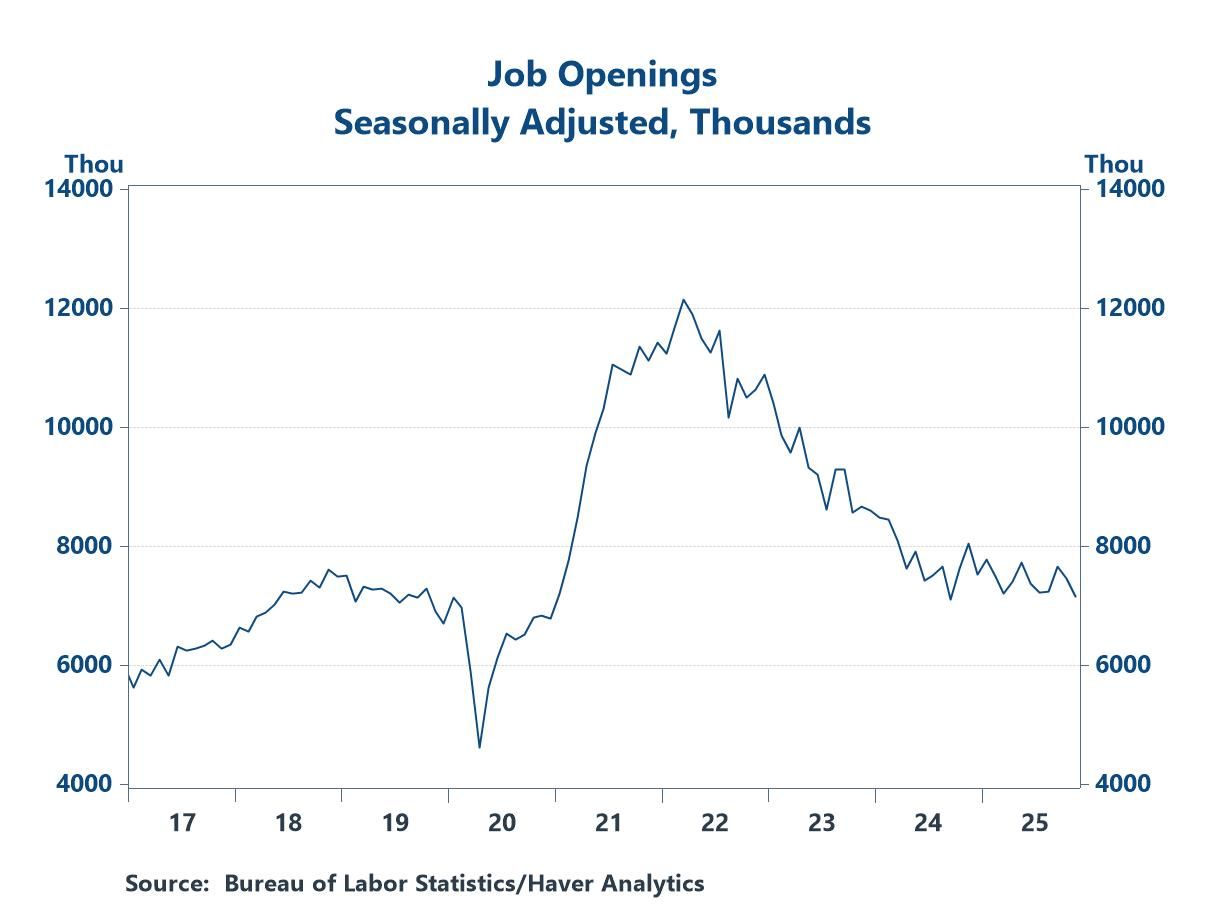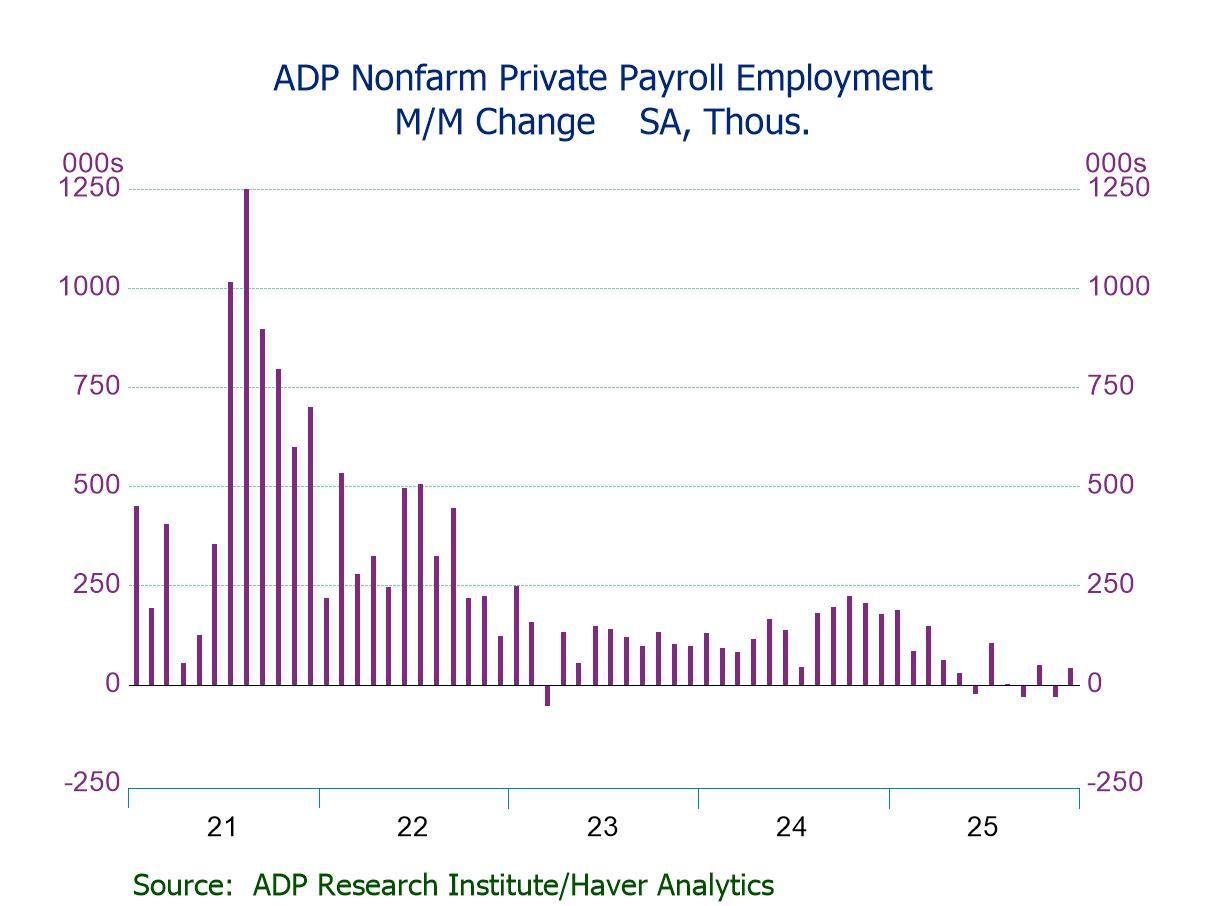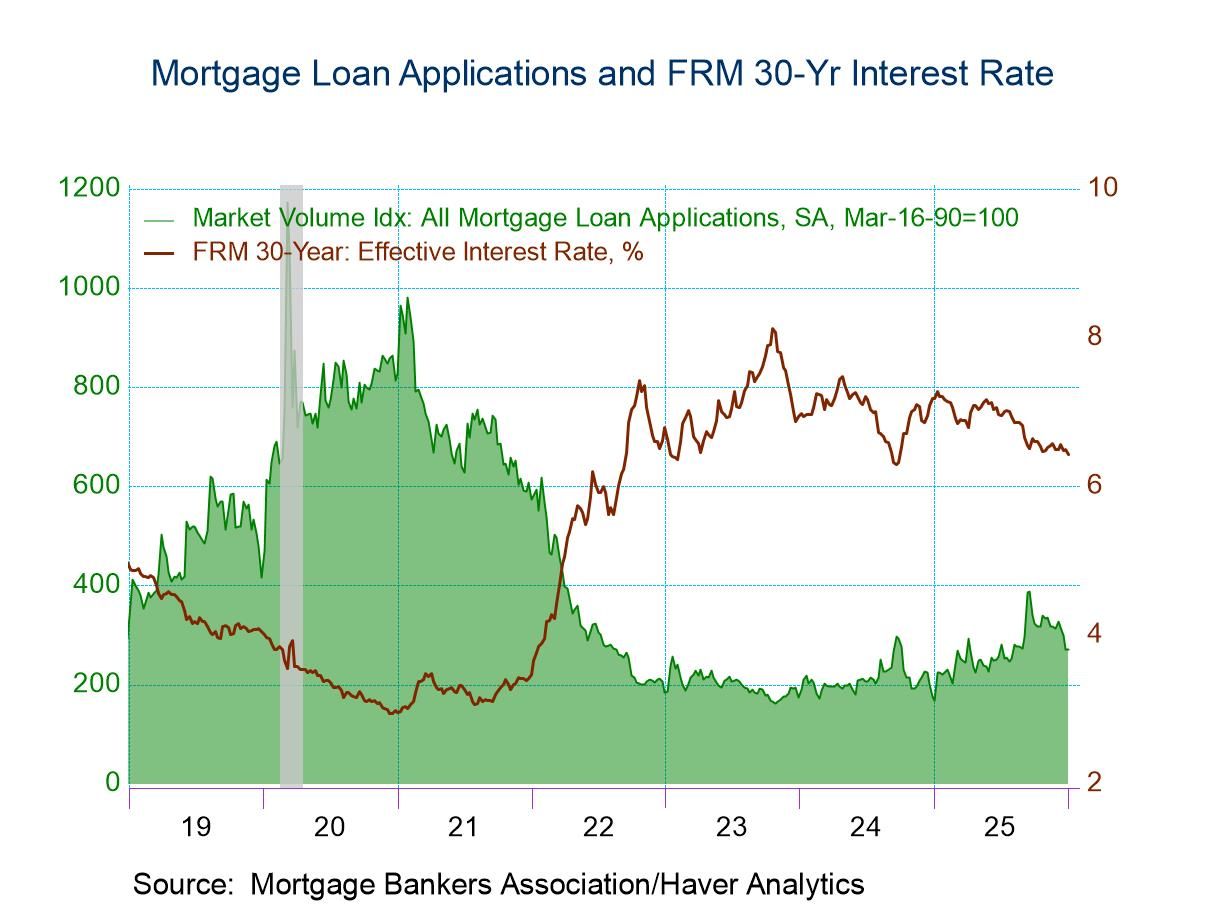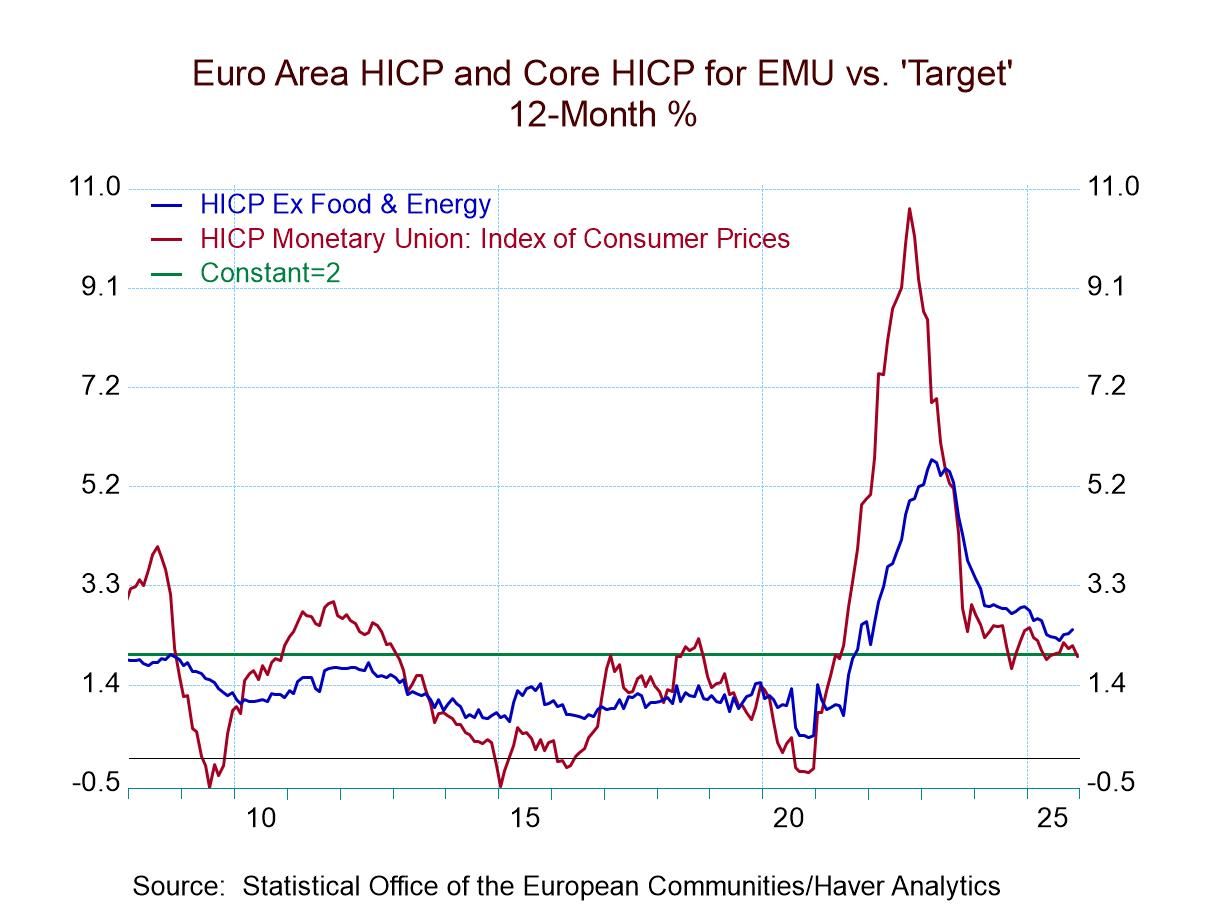Split Decision for the Economy Watchers Index

Japan's economy watchers current index fell to 50.2 in January from a level of 51.8 in December; its queue standing is in its 70.4 percentile, still well above its historic median that occurs at a rank of 50% but more in the range of readings that are indicating relatively firm economic activity.
In contrast, the economy watchers future index rose to 52.5 in January from 50.4 in December. The future index has an 83.8 percentile standing, considerably stronger in ranking than the current index and more clearly at a standing level that indicates more strength.
The Current Index The index showed a decline in the headline as well as declines in six components of the index. The reading for households fell, the reading for the retailing sector fell, the reading for eating and drinking places fell – and fell relatively sharply, the reading for services fell, and the reading for corporations, generally, fell led by a decline in the assessment of nonmanufacturing corporations.
Among the various entries under the current index, the strongest, despite the sharp drop in January, is the 86.6 percentile standing for eating and drinking places, followed by an 80.6 percentile standing for manufacturers. In the case of manufacturers, this likely is the result for Japanese firms benefiting from what has been a chronically weak yen at a time that international activity has begun to strengthen in a number of places. The U.S. economy continues to show stronger growth and the U.S. is Japan's second largest trading partner. However, Japan's largest trading partner is China, and that economy is struggling. The weakest ranking in the current index is for employment; it has a 47.8 percentile standing, leaving it below its historic median; however, the diffusion index still has a reading at 53.3 that improved month-to-month and continues to indicate employment is expanding. While the employment metric is the weakest current reading, housing is in second place at a 59.7 percentile standing.
The Future Index Japan's future index is quite solid with a headline standing at its 83.8 percentile. Three of its components have rankings in their 90th percentile or higher: one is for households at the 90.1 percentile, another is for eating and drinking places at the 98.4 percentile, and a third is for services at the 92.1 percentile. Only one category weakened month-to-month; that was services. It weakened to a diffusion reading of 54.9 in January from 55.2 in December but continues to have a percentile standing in its 90th percentile at 92.1. The weakest future reading is the same as in the current indexes- employment. Employment in the future framework has a 53.8 percentile standing, only modestly above its historic median. The monthly future reading for employment stands at 53.2, up from 52.9 in December.
Momentum Current- The current index shows weaker increases over 12 months than what occurred over 12 months one year ago; that's true up and down the line for components as well as the headline apart from manufacturing that shows a gain. Only retailing shows a decline in diffusion compared with the level of one year ago. Over six months, seven of the categories plus the headline show declines in value. Over three months, five categories plus the headline show declines in their surveyed diffusion indexes. The current index clearly has been losing momentum for a while.
Future- The future index also shows smaller increases over 12 months than it logged over the previous 12 months for all categories except for eating and drinking places, manufacturers, and for employment. Each of those 3 categories show a step up in 12-month changes compared to what they had reported one year ago. Over six months, changes are weaker than they are over 12 months for most components; all components are weaker on balance over six months including the headline except for manufacturers. The manufacturers’ future reading shows persistent acceleration over three months and over six months as well as over 12 months (compared to 12 months ago). The headline reading over three months in the future index shows broad-based increases; these increases are larger than the changes posted over six months for the most part. There is only one exception to that and that's housing; it is weaker on balance over three months.

Summing up Japan's economy watchers index shows broad weakening in January and an ongoing loss in momentum for the current index. The future index had been weakening as well, but over three months, conditions have been improving and they improved broadly again in January. The levels attained by the future index readings are strong and relatively stronger than what are posted in the current index comparing historic standing readings. This tells us that survey respondents, even if they're being confronted by somewhat weaker economic conditions, are still looking for improvements ahead.
Robert Brusca
AuthorMore in Author Profile »Robert A. Brusca is Chief Economist of Fact and Opinion Economics, a consulting firm he founded in Manhattan. He has been an economist on Wall Street for over 25 years. He has visited central banking and large institutional clients in over 30 countries in his career as an economist. Mr. Brusca was a Divisional Research Chief at the Federal Reserve Bank of NY (Chief of the International Financial markets Division), a Fed Watcher at Irving Trust and Chief Economist at Nikko Securities International. He is widely quoted and appears in various media. Mr. Brusca holds an MA and Ph.D. in economics from Michigan State University and a BA in Economics from the University of Michigan. His research pursues his strong interests in non aligned policy economics as well as international economics. FAO Economics’ research targets investors to assist them in making better investment decisions in stocks, bonds and in a variety of international assets. The company does not manage money and has no conflicts in giving economic advice.







 Global
Global